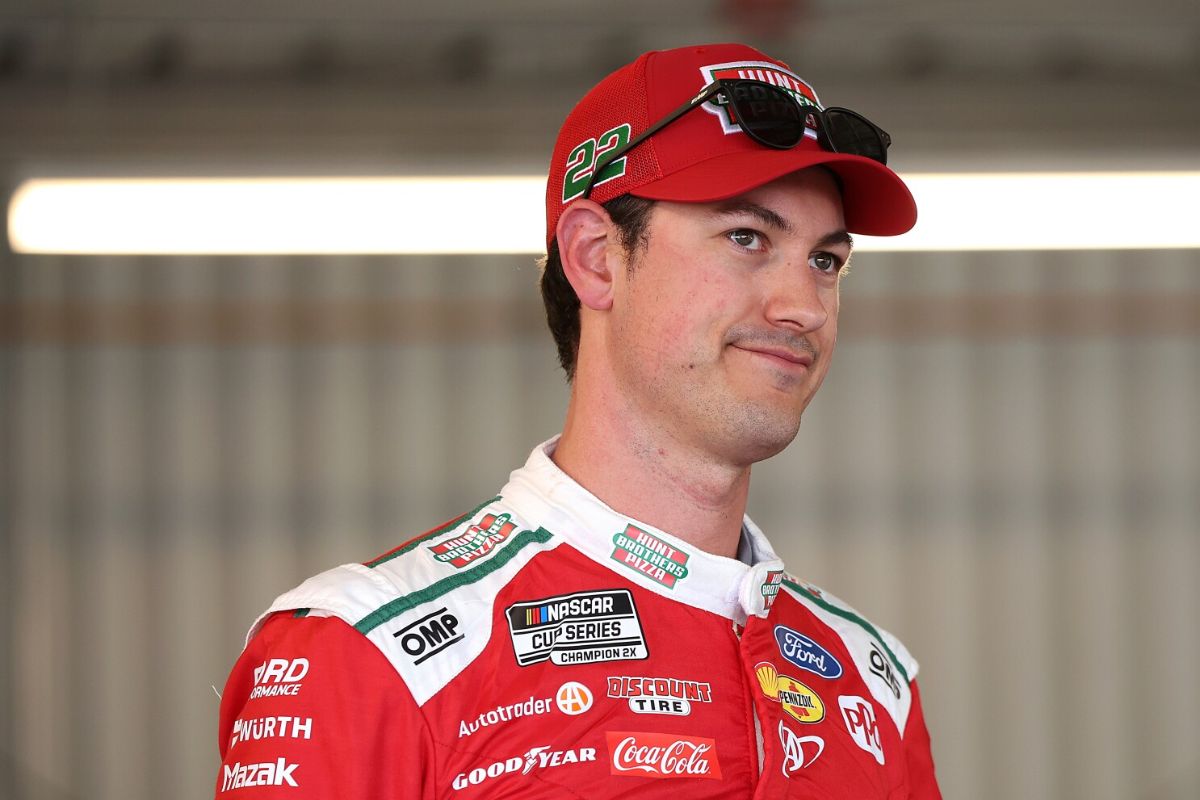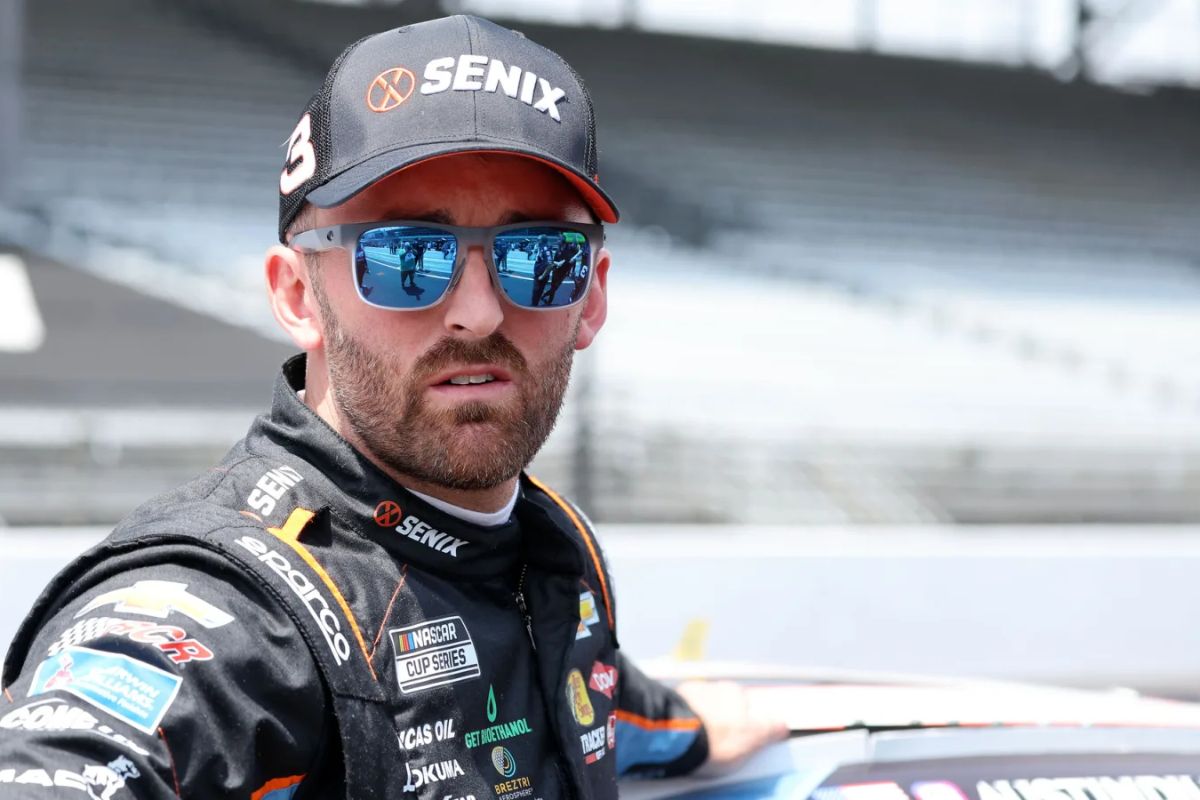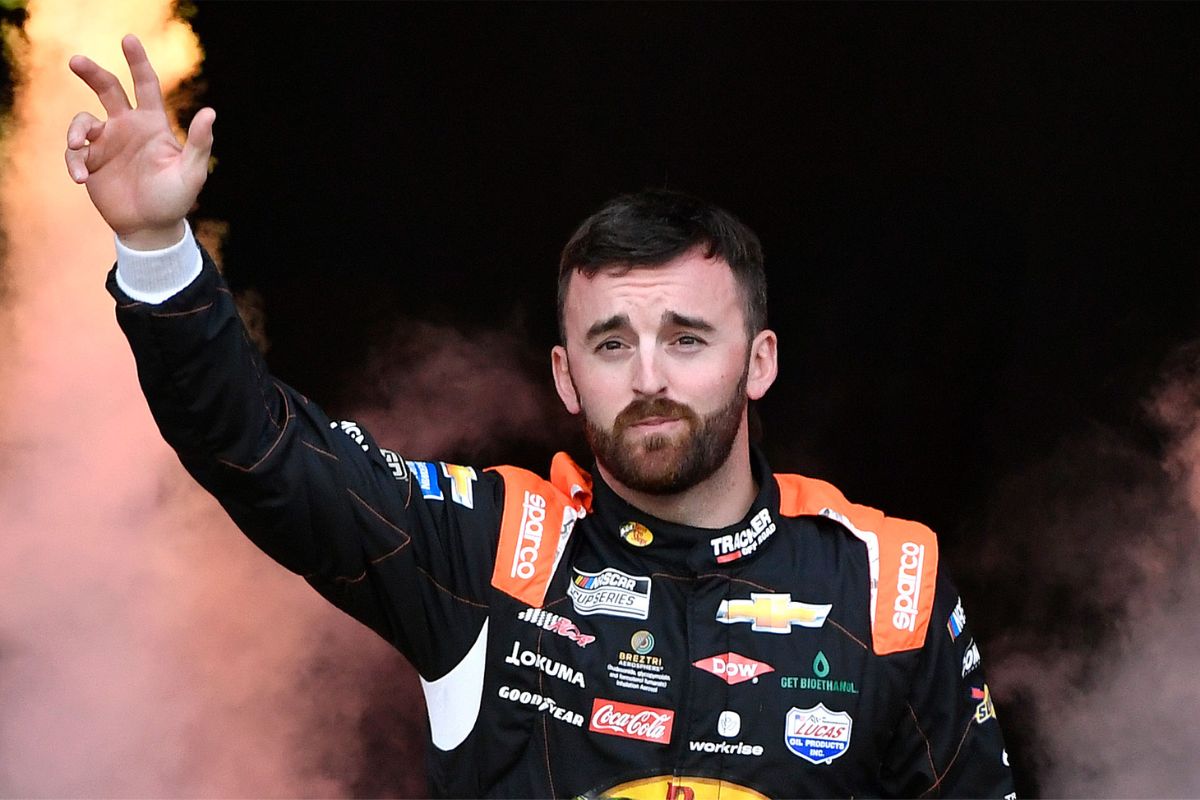Austin Dillon’s Epic Clash With NASCAR Giants: Austin Dillon‘s recent confrontations with NASCAR’s elite have not only reignited interest in his career but also raised questions about the dynamics of competition in the sport. His newfound aggressive approach at Richmond marked a notable departure from his previous, more restrained style, positioning him as a formidable contender rather than a mere underdog. This shift could serve as a crucial moment, yet the implications of these rivalries extend beyond personal ambition—could they ultimately reshape his path in NASCAR? The unfolding narrative invites a closer examination of how Dillon’s tactical actions might influence his standing among the giants of the track.
Key Highlights
- Austin Dillon’s aggressive tactics at Richmond marked a pivotal win, challenging his underdog status and attracting attention from fans and sponsors alike.
- Recent rivalries among drivers have intensified, creating opportunities for Dillon to capitalize on chaos and enhance his visibility in the sport.
- Engaging with NASCAR giants through bold racing strategies could shift Dillon’s career trajectory and alter fans’ perceptions of him as a serious contender.
- The playoff dynamics amplify the stakes, making Dillon’s ability to navigate rivalries crucial for potential success and career revival.
Austin Dillon’s Aggressive Drive to Victory
Austin Dillon’s aggressive drive to secure victory at Richmond exemplified not only his resolve as an underdog but also a tactical shift in his racing approach that ultimately redefined his standing in the NASCAR playoff landscape. In a climate where stakes are high and every position counts, Dillon’s assertiveness became a defining characteristic of his performance. As the laps dwindled, his willingness to push boundaries and engage directly with competitors demonstrated a newfound tenacity that had previously eluded him.
Historically, Dillon’s racing style leaned towards caution, often prioritizing strategy over confrontation. However, the urgency of the playoff bubble compelled him to adopt a more aggressive stance, positioning himself as a formidable contender rather than a mere participant. This shift not only enhanced his visibility but also resonated with fans who appreciate the raw competitiveness that characterizes elite motorsport.
Dillon’s actions on the track, particularly as he interacted with two well-established Cup Series drivers, signal a willingness to confront conflict—a bold move that could either cement his place in the playoffs or ignite rivalries that might haunt him down the line. The successful execution of this aggressive strategy not only secured a much-needed victory but also disrupted the status quo within the race, challenging the dominance of his rivals.
Austin Dillon’s Relevance in the Sport
In the constantly changing landscape of NASCAR, Dillon’s recent performances have reignited discussions about his significance within the sport, challenging the perception that he is merely a supplementary player amidst giants like Denny Hamlin and Joey Logano. The Cook Out 400 highlighted Dillon’s potential to disrupt established narratives, as he outmaneuvered two of NASCAR’s most accomplished drivers, demonstrating that he remains a formidable competitor despite a challenging season.
Critics often highlight Dillon’s position in the standings—32nd with no wins in two years—as evidence of his diminishing relevance. However, this perspective overlooks the subtleties of the NASCAR ecosystem, particularly the cutthroat playoff system that rewards victory over consistency. As analysts like Brett Griffin emphasize, the stress to win can lead to abrupt career assessments, often overlooking the talent and experience that Dillon possesses. His capacity to compete against established stars not only emphasizes his skill but also reaffirms his potential to reclaim a more prominent role in the series.
“If you’re gonna be mad at anybody here, you have to be mad at NASCAR. The rule is, win and you’re in. Austin Dillon is 32nd in points, hasn’t won in two years. People are talking about how he should quit.” – Griffin
Moreover, Dillon’s resilience in the face of adversity speaks to the broader narrative of perseverance in motorsports. In an era where the sport is evolving and younger talents are emerging, Dillon’s ability to contend with veterans like Hamlin and Logano serves as a reminder that he is still a relevant player in the NASCAR arena.
Dillon’s Aggressive Strategy and Its Impact
Employing a bold and aggressive strategy, Dillon’s recent tactics on the track have not only secured him a win but also redefined his standing among NASCAR’s elite competitors. This decisive maneuver was particularly evident during the recent race at Richmond Raceway, where Dillon, faced with a dwindling opportunity, took calculated risks that ultimately paid off. By shoving aside both Joey Logano and Denny Hamlin, he showed not just a will to win but a willingness to engage with the sport’s most formidable figures, marking a notable turning point in his career.
Dillon’s approach is representative of a broader trend in NASCAR, where the line between aggressive racing and reckless behavior often blurs. T.J. Majors aptly noted that Dillon’s moves have raised his relevance in the sport, suggesting that his aggressive stance is as crucial as the victory itself. This perspective is critical, as it highlights the importance of being in the spotlight—something Dillon desperately needed after a two-year dry spell.
Justifying this aggressive approach, team strategist Kraft emphasized the necessity of such tactics for the benefit of sponsors and team morale. Dillon’s actions not only strengthen his own career but also serve as a rallying point for his team. In a sport defined by rivalries and competitive spirit, Dillon’s clash with NASCAR’s giants may very well ignite a resurgence in his career, shifting the narrative from one of struggle to one of tenacity and ambition.
“But you have to do this. You have to do this for your guys, your sponsors.” – Kraft
Hamlin’s Previous Conflicts with Logano
The intense rivalries within NASCAR are represented by the tumultuous relationship between Denny Hamlin and Joey Logano, marked by a series of confrontations that reveal the sport’s inherent volatility and competitive spirit. Their animosity came to a head during the 2019 Martinsville race, where Hamlin’s aggressive handling saw him shove Logano into the wall at Turn 4, resulting in notable damage to Logano’s No. 22 Ford Mustang. This incident was not merely a moment of reckless driving; it encapsulated the fierce competition and elevated stakes that define NASCAR racing.
“They’re arrogant a**holes, they wreck a lot of people to win…Listen, I like both of these guys personally, both of them are good news…But he wrecked the two biggest a**holes in the sport!” – Griffin
The aftermath of this clash highlighted the emotional investment both drivers have in their careers. What began as a competitive disagreement escalated when Logano, in a moment of frustration, slapped Hamlin on the shoulder, almost leading to a physical confrontation. Hamlin characterized the interaction as a “civil discussion” gone awry, illustrating how quickly tensions can flare in the heat of competition. His comment, “like Joey does, he does a little push and then runs away,” emphasizes the cyclical nature of their conflicts, where aggression often begets further retaliation.
“We were having a discussion, everything was civil, and then, like Joey does, he does a little push and then runs away.” – Hamlin
These incidents are indicative of a broader narrative within NASCAR, where rivalries fuel the sport’s drama and improve fan engagement. The Hamlin-Logano saga not only highlights their personal vendetta but also reflects the larger culture of NASCAR, where the line between competition and conflict is often blurred. As drivers navigate this complex landscape, the implications for their careers can be profound, influencing both their performance and their public personas.
Logano’s Controversial Racing Tactics
Logano’s racing tactics have sparked substantial debate within the NASCAR community, particularly as they intersect with the intense rivalries that define the sport, such as his ongoing conflict with Hamlin. Recently, Logano’s aggressive navigation during the Martinsville playoff race raised eyebrows, particularly when he collided with Ty Gibbs, instigating a multi-car crash. This incident emphasizes a broader pattern of behavior that has drawn criticism from fellow competitors and fans similarly.
Hamlin’s remarks encapsulate the sentiment surrounding Logano’s tactics: “I don’t love the way the 22 was racing guys that had earned their position to race for a championship.” Such comments highlight the ethical dilemmas faced by drivers in high-stakes situations. Logano’s actions not only jeopardize the race standings but also risk escalating tensions among competitors.
“I don’t love the way the 22 [Logano] was racing guys that had earned their position to race for a championship. He’s kind of knocking guys out of the way.”
“I think if the roles were reversed, he’d probably have a little problem with that.” – hamlin
Key aspects of Logano’s controversial tactics include:
- Aggressive Navigation: Frequently forcing competitors off their racing lines.
- Team Dynamics: Impacts team cohesion when teammates become targets.
- Reputation Management: Risks alienating fans and fellow drivers with perceived recklessness.
As Austin Dillon navigates this turbulent landscape, he may find himself caught in the crossfire of these feuds. With playoffs looming, the stakes are considerably higher, and the potential for retaliatory moves adds an intriguing layer to the unfolding drama.

News in Brief: Austin Dillon’s Epic Clash With NASCAR Giants
Austin Dillon’s recent aggressive racing style and the ensuing rivalries with prominent figures in NASCAR may serve as crucial elements for rejuvenating his career.
By embracing conflict and leveraging the competitive tension among top drivers, Dillon possesses an opportunity to redefine his image and improve his standings within the sport.
A tactical approach to these feuds could not only raise his performance but also reshape perceptions of his capabilities as a formidable contender in NASCAR.
ALSO READ: Austin Dillon Defends His Controversial Win: “Part of the Sport”



